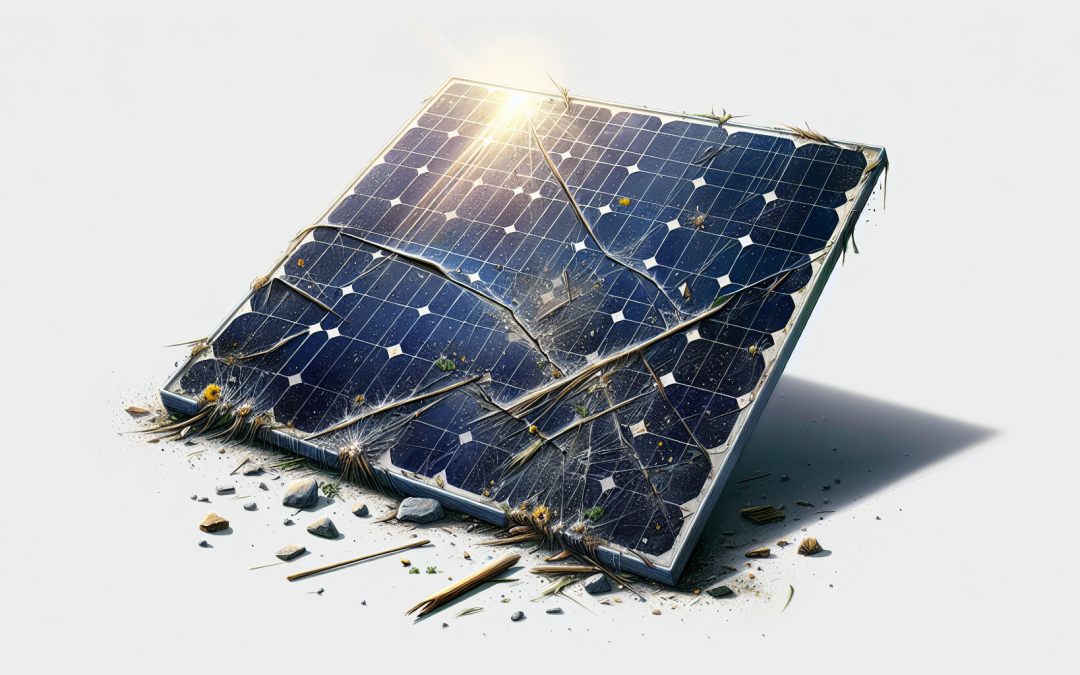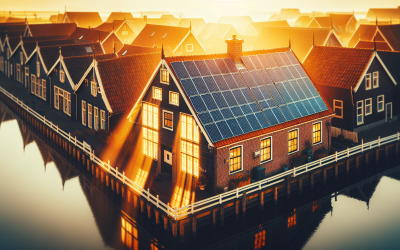So you’ve invested in solar panels to reduce your carbon footprint and save some money on your energy bills, but now you’re facing a problem – your solar panels aren’t producing power. Before you start panicking or calling for professional help, there are a few things you can check on your own. From simple troubleshooting steps like inspecting the panels for dirt or debris to more technical solutions like checking the inverter, this article will guide you through the process of getting your solar panels up and running again.
Check the Weather and Time of Day
Monitor the weather conditions
The first step in troubleshooting your solar panel system is to monitor the weather conditions. While solar panels are designed to generate electricity even on cloudy days, extreme weather conditions such as heavy rain, snow, or hail can affect their performance. By checking the weather forecast, you can determine whether unusual weather patterns may be causing a power outage in your solar panels.
Consider the time of day
Another factor to consider is the time of day. Solar panels rely on sunlight to generate electricity, so it’s important to ensure that they are exposed to direct sunlight during peak hours. If it’s early morning or late afternoon, the angle of the sun may not be optimal for energy production. By checking the time of day, you can determine whether the lack of power is due to the current position of the sun.
Inspect the Solar Panels
Look for physical damage
Inspect your solar panels to check for any physical damage. Examine the surface of each panel for cracks, chips, or signs of wear and tear. Damaged panels may not be able to generate as much electricity as they should, so it’s important to identify and address any issues. If you notice any damage, it’s recommended to contact a professional technician for repair or replacement.
Check for dirt or debris
Dirt or debris on the surface of your solar panels can block sunlight and reduce their efficiency. Inspect your panels for any dirt, leaves, bird droppings, or other debris. If you notice any buildup, gently clean the surface using a non-abrasive sponge or cloth and mild detergent. It’s important to avoid using harsh chemicals or abrasive materials that could damage the panels.
Examine the wiring and connections
Inspect the wiring and connections of your solar panel system. Ensure that all cables are securely connected and free from fraying or damage. Loose or damaged connections can disrupt the flow of electricity, leading to a decrease in power production. If you notice any issues with the wiring or connections, it’s recommended to reach out to a licensed electrician for assistance.
Inspect the inverter
The inverter is a crucial component of your solar panel system that converts the direct current (DC) generated by the panels into alternating current (AC) that can be used in your home. Inspect the inverter to check for any error messages or warning lights. If the inverter is displaying any issues, it may be the cause of the power outage. In such cases, contacting a certified solar panel technician is advisable for professional diagnosis and repair.
Assess the System Performance
Examine the inverter display
The display on your inverter provides valuable information about the performance of your solar panel system. Take a close look at the display to check if it’s showing any error codes or anomalies. The inverter display can help you identify any specific issues that may be affecting the power production of your panels. If you’re unsure about the meaning of any error codes or abnormal readings, consult your solar panel’s user manual or contact the manufacturer for guidance.
Review the energy monitoring system
Many solar panel systems are equipped with energy monitoring systems that track and display real-time and historical energy production data. Access your energy monitoring system to review the power output of your panels over time. Look for any significant drops or inconsistencies in energy production that may indicate an underlying issue. It’s important to analyze the data and compare it to previous performance to pinpoint potential problems.
Analyze past energy production data
In addition to reviewing the energy monitoring system, analyze past energy production data to gain insights into the long-term performance of your solar panel system. Look for any trends or patterns in energy production that may be helpful in identifying the cause of the power outage. If you notice a sudden decline in production or a significant deviation from expected results, further investigation may be necessary.
Consider Shading Issues
Identify potential sources of shading
Shading can significantly impact the efficiency of your solar panel system. Identify any potential sources of shading that may be obstructing the sunlight from reaching your panels. This could include nearby trees, buildings, or other objects that cast a shadow on your panels during certain times of the day. Understanding the shading patterns can help you determine whether shading is the cause of the power outage.
Trim or remove nearby trees or objects
If shading is identified as an issue, consider trimming or removing nearby trees or objects that are causing the shading. By ensuring that your panels receive uninterrupted sunlight, you can maximize their energy production. Consult with a professional arborist or tree service to safely trim or remove any trees that may be blocking the sunlight.
Install shading analysis tools
To accurately assess the impact of shading on your solar panel system, consider installing shading analysis tools. These tools use advanced technology to model and simulate shading in real-time, helping you understand the exact extent of the shading and its effect on energy production. By using shading analysis tools, you can make informed decisions about potential remedies or system modifications.
Check the Battery System (if applicable)
Inspect the battery connections
If your solar panel system is equipped with a battery system, inspect the battery connections for any loose or damaged connections. Ensure that the cables are securely connected and there are no signs of corrosion. Faulty connections can prevent the battery from charging or discharging properly, leading to a lack of power. If any issues are detected, consult the user manual or contact the manufacturer for specific troubleshooting steps.
Verify the charge level
Check the charge level of your battery system to ensure that it’s functioning correctly. A low charge level may indicate that the battery is not receiving enough power from the solar panels. Consult the user manual or contact the manufacturer to determine the expected charge levels and how to interpret the readings on your battery system.
Test the battery performance
If you suspect that the battery is not performing as expected, it’s important to test its performance. Consult the user manual or contact the manufacturer to understand the recommended procedures for testing the battery. This may involve discharging the battery and measuring its capacity or conducting other tests to assess its overall health. If the battery is found to be faulty, contacting a professional technician or the manufacturer’s support team is recommended for further assistance.
Consult the User Manual or Manufacturer
Refer to the user manual
If you’ve exhausted all other troubleshooting steps and are still unable to identify the cause of the power outage, refer to the user manual provided by the solar panel manufacturer. The user manual contains valuable information about the specific components of your system and provides troubleshooting guidelines for common issues. Follow the instructions carefully and reach out to the manufacturer’s support team if further clarification or assistance is needed.
Contact the solar panel manufacturer
In case of persistent power outage issues, it’s advisable to contact the solar panel manufacturer directly. The manufacturer’s customer service team can provide specialized support and guidance based on their expertise and knowledge of the product. They may be able to offer additional troubleshooting advice or recommend further steps to resolve the issue.
Contact a Professional
Engage a certified solar panel technician
If you’re unable to resolve the power outage issue on your own, it’s crucial to engage a certified solar panel technician. These professionals are trained and experienced in diagnosing and repairing solar panel systems. They have the necessary tools and expertise to identify complex issues and provide appropriate solutions. Hiring a certified technician can save you time, effort, and ensure the safety of your solar panel system.
Consult a licensed electrician
In certain cases, the power outage may be caused by electrical issues beyond the solar panel system itself. If you suspect that the problem lies in the electrical wiring or components of your home’s electrical system, it’s recommended to consult a licensed electrician. Electricians are qualified to diagnose and repair electrical problems and can help determine whether the issue is specific to the solar panel system or related to the broader electrical infrastructure.
Reach out to the solar panel installer
If your solar panel system is still under warranty, it’s worth reaching out to the solar panel installer for assistance. The installer may offer complimentary support or be responsible for repairs and maintenance as part of the warranty agreement. Contact the installer and provide them with all relevant information about the power outage. They will be able to guide you through the warranty process and provide the necessary support to resolve the issue.
Verify System Warranty and Insurance
Review the warranty terms
Take the time to review the warranty terms of your solar panel system. Understand the coverage and limitations of the warranty, and check if the identified issue is covered. If the power outage is due to a manufacturing defect or installation error, you may be eligible for repairs, replacements, or other forms of compensation as per the warranty agreement. Contact the manufacturer or installer to initiate a warranty claim if applicable.
Check if the issue is covered by insurance
If you have homeowner’s insurance or a specific policy that covers your solar panel system, check whether the identified issue is covered. Insurance coverage can provide financial protection against unforeseen events or damages to your solar panel system. Contact your insurance provider to understand the terms and conditions of your policy and initiate a claim if necessary.
Evaluate Energy Consumption
Assess energy usage in the household
In addition to troubleshooting the solar panel system, it’s important to assess the overall energy consumption in your household. High energy usage can strain the capacity of your solar panel system and lead to power outages or decreased efficiency. Evaluate your energy usage patterns and identify areas where energy can be saved. This may involve adopting energy-efficient appliances, adjusting usage habits, or implementing other energy-saving measures.
Consider energy-saving measures and appliances
To optimize the performance of your solar panel system, consider implementing energy-saving measures and appliances. This can include upgrading to energy-efficient LED lighting, installing programmable thermostats, or improving insulation to reduce heating and cooling costs. By reducing overall energy demand, you can ensure that your solar panels are producing enough power to meet your needs.
Consider Upgrading or Adding Panels
Evaluate the system’s capacity
If you’re consistently experiencing power outages or your energy needs have increased, it may be worth considering upgrading your solar panel system. Evaluate the capacity of your current system to determine if additional panels are required to meet your energy requirements. Consulting with a certified solar panel technician or the manufacturer can help you determine the feasibility of system upgrades.
Explore expansion opportunities
If you have available space and sufficient sunlight exposure, exploring expansion opportunities may be beneficial. Additional solar panels can increase the energy production of your system, reducing the likelihood of power outages and providing more electricity for your household needs. Contact a certified solar panel technician to assess the feasibility and potential benefits of expanding your current system.
In conclusion, if your solar panels aren’t producing power, it’s important to follow a systematic approach to identify and resolve the issue. Begin by checking the weather conditions and considering the time of day to rule out any external factors impacting power production. Inspect the solar panels for physical damage, dirt, or debris, and ensure that the wiring, connections, and inverter are in good condition. Assess the system’s performance through the inverter display, energy monitoring system, and past energy production data. Consider potential shading issues and make necessary adjustments or installations to maximize sunlight exposure. Check the battery system if applicable, consulting the user manual or manufacturer for guidance. If troubleshooting steps don’t lead to a resolution, reach out to professionals such as certified solar panel technicians, licensed electricians, or the solar panel installer. Verify the system warranty and insurance coverage and evaluate your household’s energy consumption to optimize overall efficiency. Finally, consider upgrading or adding panels to meet increased energy demands. By following these steps, you can effectively address power outages and ensure the long-term performance of your solar panel system.









